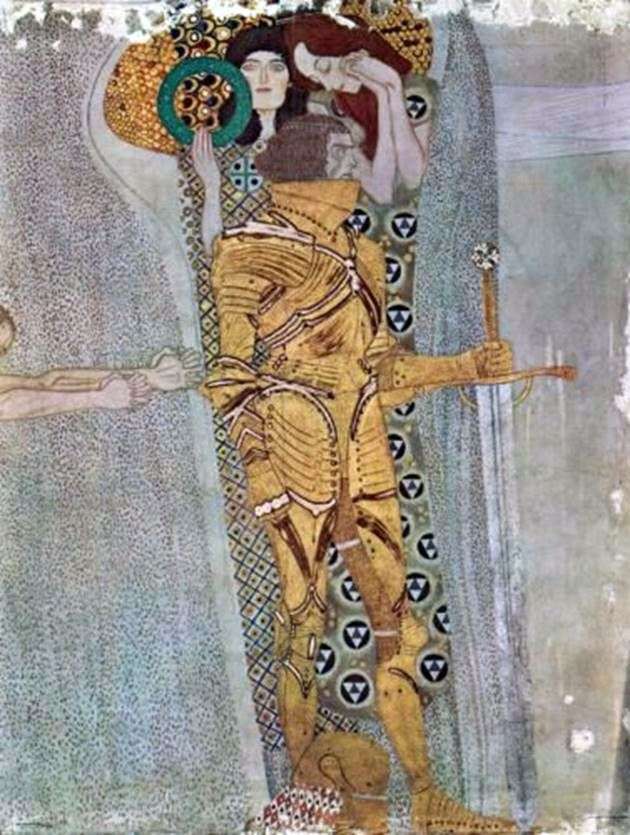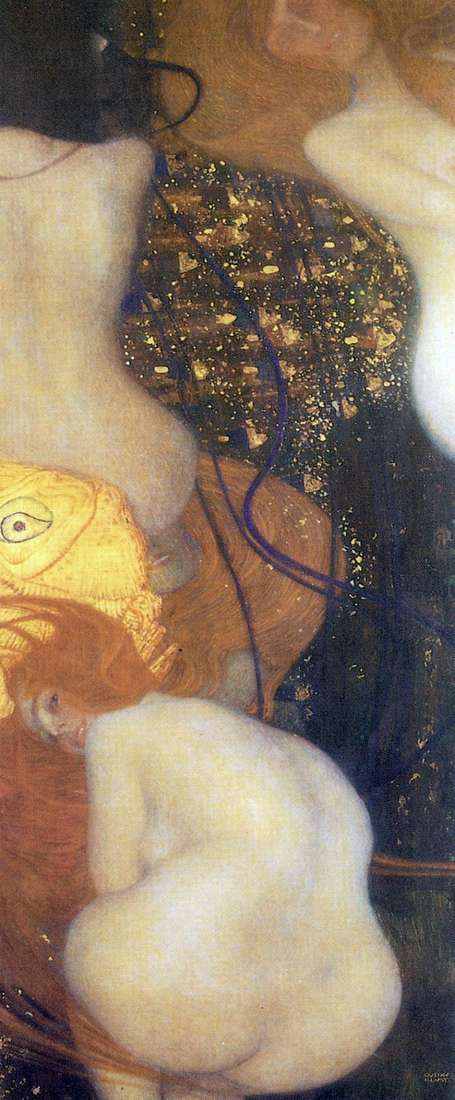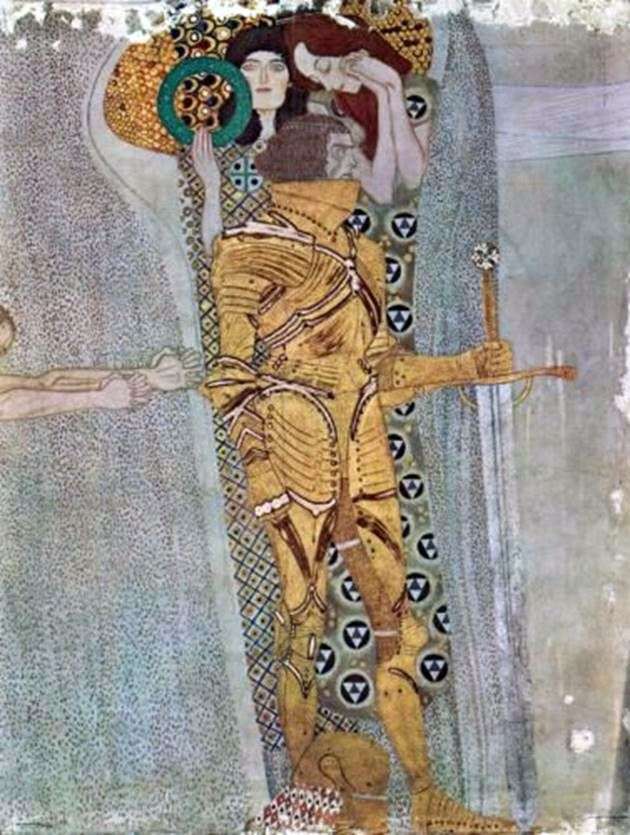
In 1902, members of the Vienna Secession organized an exhibition, timed to coincide with the opening of the monument to Ludwig van Beethoven, created by Max Klinger. In his work, Klinger used a variety of materials – white and colored marble, gypsum, bronze, ivory, – presenting the great composer in the form of a deity.
Freese, made by Klimt for this exhibition, echoed in a manner with the sculpture of Klinger – in addition to paint, the technical arsenal of the artist included silver and gilding, splinters of mirrors, nails and buttons. The figures shown on the frieze had nothing to do with either Beethoven or the music as a whole. However, in the catalog of the exhibition it was said that the frieze expresses “the hopes and desires of all mankind,” and shows that art leads people “into the ideal realm of pure pleasures, pure happiness and pure love.”
Originally it was assumed that this frieze would be temporary. For decades, no one has seen it, but more recently, in 1986, the restored frieze became available to connoisseurs of painting. Above, he reproduced his fragment entitled “Hostile Forces”.
 Frise de Beethoven – Gustav Klimt
Frise de Beethoven – Gustav Klimt Friso de Beethoven – Gustav Klimt
Friso de Beethoven – Gustav Klimt Frieze of Beethoven, Wandgem by Gustav Klimt
Frieze of Beethoven, Wandgem by Gustav Klimt Poster for the first exhibition of the Vienna Secession by Gustav Klimt
Poster for the first exhibition of the Vienna Secession by Gustav Klimt Athena Pallada by Gustav Klimt
Athena Pallada by Gustav Klimt Goldfish by Gustav Klimt
Goldfish by Gustav Klimt Friso Beethoven, Wandgem – Gustav Klimt
Friso Beethoven, Wandgem – Gustav Klimt Panel in the dining room of the palace of Stockle by Gustav Klimt
Panel in the dining room of the palace of Stockle by Gustav Klimt